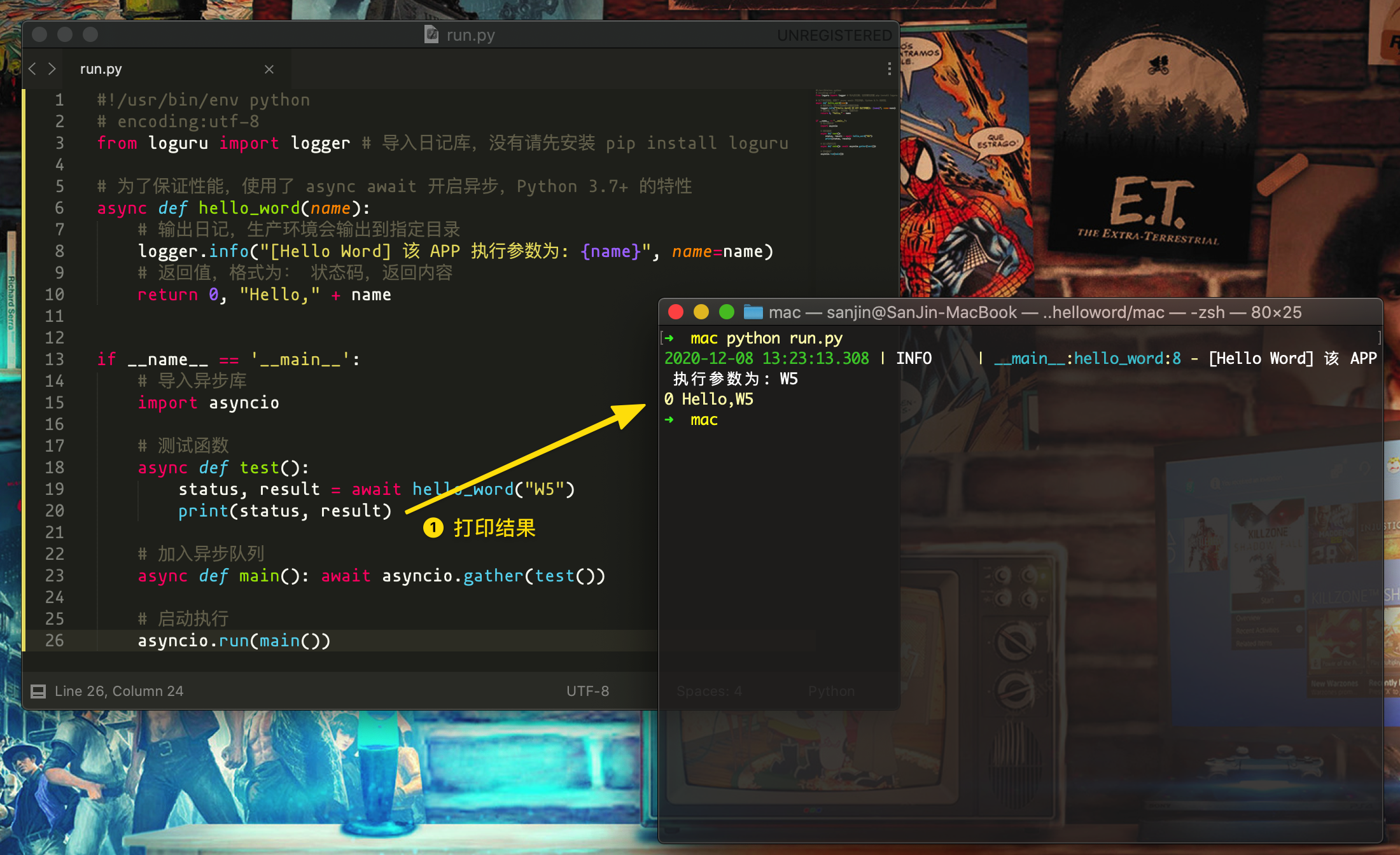注意:
- 请使用 Python 3.8+ 版本进行开发
- 除了特别需求外,一般情况下,Linux ,Mac ,Win 代码是一致的
本文列子
创建项目格式
python
├── helloworld # APP 目录名
│ ├── app.json # APP 配置文件
│ ├── icon.png # APP 图标
│ ├── main # APP 代码
| | └── run.py # APP 入口文件
│ └── readme.md # APP 说明文件
编写代码
python
#!/usr/bin/env python
# encoding:utf-8
from loguru import logger # 导入日记库,没有请先安装 pip install loguru
# 为了保证性能,使用了 async await 开启异步携程,Python 3.7+ 的特性
async def hello_world(name):
# 输出日记,生产环境会输出到指定目录
logger.info("[Hello World] 该 APP 执行参数为: {name}", name=name)
# 返回值,格式为: 状态码,返回内容
return {"status": 0, "result": "Hello," + name}
async , await 使用 Demo
python
#!/usr/bin/env python
# encoding:utf-8
from loguru import logger
async def hello_world(name):
try:
import requests
except:
logger.info("[Hello World] 导入 requests 模块失败, 请输入命令 pip install requests")
return 2, "缺少 requests 模块"
# 使用 await
r = await requests.get(url="https://w5.io")
print(r)
logger.info("[Hello World] 该 APP 执行参数为: {name}", name=name)
return {"status":0,"result":"Hello," + name,"html": '''<span style="color:red">{name}</span>'''.format(name="Hello," + name)}
APP 测试
使用 asyncio 运行测试,正式发布后请删除 main 入口函数
python
#!/usr/bin/env python
# encoding:utf-8
from loguru import logger # 导入日记库,没有请先安装 pip install loguru
# 为了保证性能,使用了 async await 开启异步,Python 3.7+ 的特性
async def hello_world(name):
# 输出日记,生产环境会输出到指定目录
logger.info("[Hello World] 该 APP 执行参数为: {name}", name=name)
# 返回值,格式为: 状态码,返回内容
return {"status": 0, "result": "Hello," + name}
if __name__ == '__main__':
# 导入异步库
import asyncio
# 测试函数
async def test():
result = await hello_world("W5")
print(result)
# 加入异步队列
async def main(): await asyncio.gather(test())
# 启动执行
asyncio.run(main())
执行演示

 W5 SOAR 文档
W5 SOAR 文档